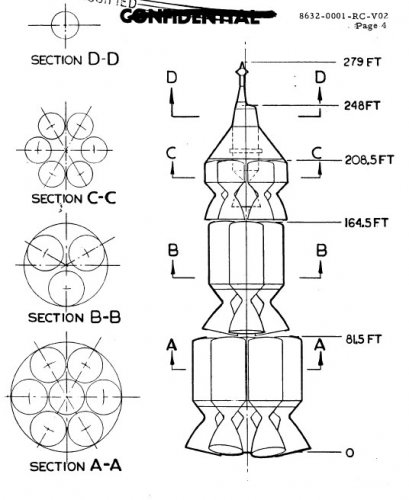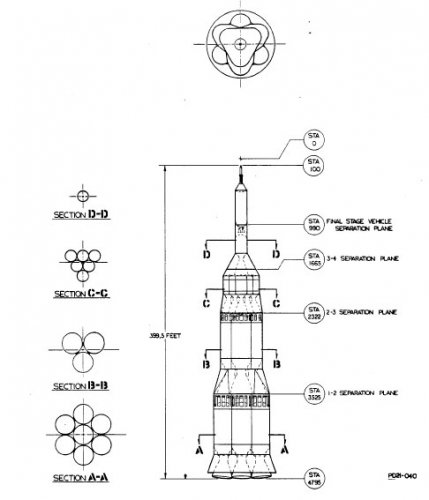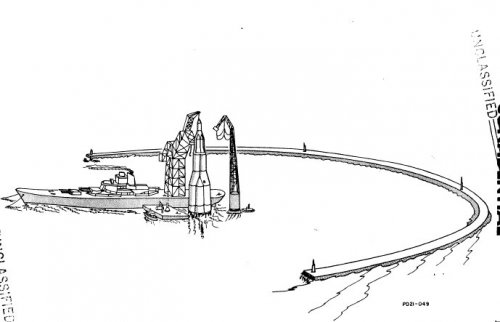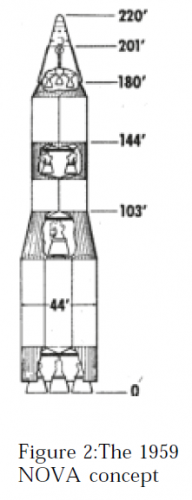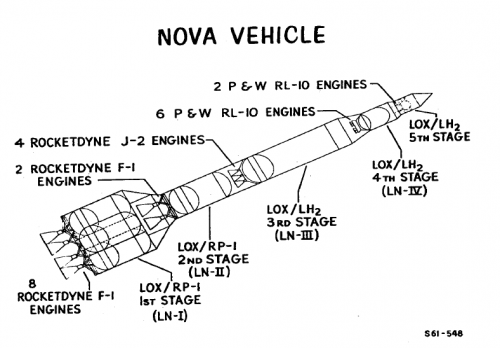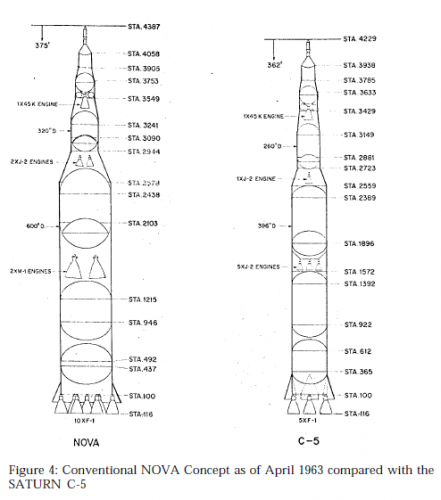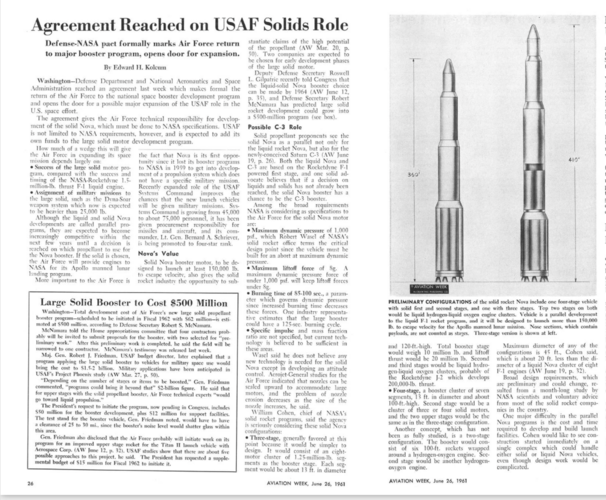- Joined
- 14 June 2006
- Messages
- 2,300
- Reaction score
- 561
Just after President Kennedy May 1961 call for a lunar landing before the end of the decade, there was a lot of proposals for boosters capable to take a manned lander to the Moon: ever growing Saturns, and Novas built with the most diverse combination of stages, liquid, solid and nuclear. One of the least known proposals, and the only one, to my knowledge, that was totally composed of solid staged (four) for the lunar trajectory insertion of the payload, was proposed in August 1961 by Jet Propulsion Laboratory. NASA headquarters charged Space Technology Laboratories of Los Angeles (Ca) to evaluate the proposal. STl actually did more that that, re-elaboratoed and refined the all-solid Nova concept, using an Apollo based lunar lander as payload (JPL had used a different capsule, that seems the Convair Astro M-1 proposal...).
So, behold these solid behemoths. First and second stages for both configuration were composed by 300-in monolithic solids, third and fourth of the JPL-s one were monolithic 222-in, 165-in for STL.
One of the method proposed by STL to launch this Nova was an offshore based protected by a semicircular breakwater, serviced by a modified Iowa-class battleship with a 1,500-ton crane in lieu of the aft turret.
Original 1961 JPL report is unavailable online, but here http://hdl.handle.net/2060/19740072201 is a revised version of early-1962.
Here is the only-available portion of the STL evaluation http://hdl.handle.net/2060/19790076743. And here is the JPL comparison of their all-solid proposal with the then current Earth-orbit rendezvous concept based on Saturn C-3s http://hdl.handle.net/2060/19740072519
So, behold these solid behemoths. First and second stages for both configuration were composed by 300-in monolithic solids, third and fourth of the JPL-s one were monolithic 222-in, 165-in for STL.
One of the method proposed by STL to launch this Nova was an offshore based protected by a semicircular breakwater, serviced by a modified Iowa-class battleship with a 1,500-ton crane in lieu of the aft turret.
Original 1961 JPL report is unavailable online, but here http://hdl.handle.net/2060/19740072201 is a revised version of early-1962.
Here is the only-available portion of the STL evaluation http://hdl.handle.net/2060/19790076743. And here is the JPL comparison of their all-solid proposal with the then current Earth-orbit rendezvous concept based on Saturn C-3s http://hdl.handle.net/2060/19740072519

